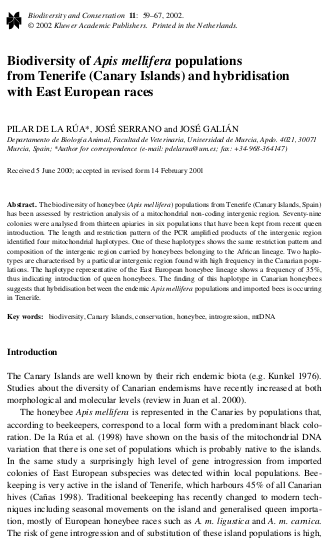PILAR DE LA RÚA, JOSÉ SERRANO and JOSÉ GALIÁN
Departamento de Biología Animal, Facultad de Veterinaria, Universidad de Murcia, 2001
Abstract. The biodiversity of honeybee (Apis mellifera) populations from Tenerife (Canary Islands, Spain) has been assessed by restriction analysis of a mitochondrial non-coding intergenic region. Seventy-nine colonies were analysed from thirteen apiaries in six populations that have been kept from recent queen introduction. The length and restriction pattern of the PCR amplified products of the intergenic region identified four mitochondrial haplotypes. One of these haplotypes shows the same restriction pattern and composition of the intergenic region carried by honeybees belonging to the African lineage. Two haplotypes are characterised by a particular intergenic region found with high frequency in the Canarian populations. The haplotype representative of the East European honeybee lineage shows a frequency of 35%, thus indicating introduction of queen honeybees. The finding of this haplotype in Canarian honeybees suggests that hybridisation between the endemic Apis mellifera populations and imported bees is occurring in Tenerife.


